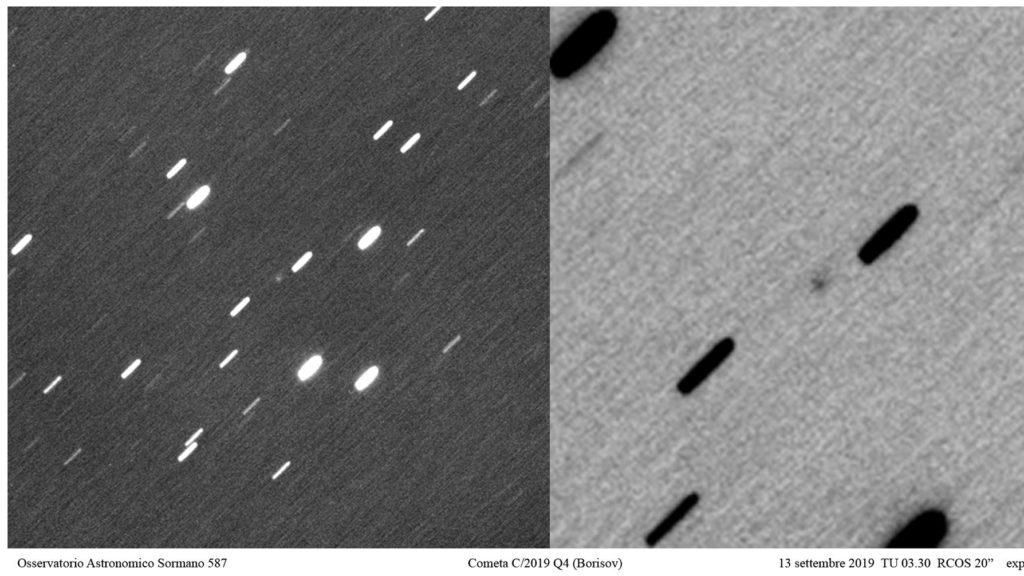Billions of cosmic objects orbit in space, yet one of them is attracting the attention and curiosity of astronomers around the world. It’s called C/2019 Q4, and it’s a comet. Discovered at the end of August by Gennady Borisov, the space object is making an orbital path different from all other celestial bodies known until now. And here theories follow each other more or less realistic.
Space is rich in cosmic objects of more or less known matter. However, from time to time, some objects of indefinite nature and origins come to “visit” us. This was the case, for example, of the cigar comet Oumuamua, whose origin is presumed to come from a solar system with two Suns. However, a second space object would be heading towards our Solar System.
Credit: https://www.youtube.com/watch?v=rnpn0ZgTm7M
The studies
Published on September 12, but revised a few days ago, the first study was published on the Cornwell University website. Detected by the Institute’s data mining system, the spatial object has a colour similar to that of the native comets of the Solar System. Equipped with an orbital eccentricity of 3.16 +/- 0.13, the data assimilate the ‘photometric’ nucleus to ~500 m, however the orbit of the comet describes a parabola. This last aspect is undoubtedly a novelty for the native comets of our Solar System, but if we excluded it, we would be talking about an interstellar comet.
The second study in order of time, published on September 14, is by the Canary Islands Institute of Astrophysics. By studying the spectrum, Spanish scholars have deduced that the composition is similar to comets originated in our solar system. However, the parabolic orbit that C/2019 Q4 is describing, shows how it is heading towards the Sun at a speed never seen before. According to forecasts, around the first ten days of December, the interstellar comet will reach the perihelion, and then definitively exit our Solar System. Probably, the comet must have originated in our Solar System, however, it will have escaped the gravitational attraction of our galaxy millions of years ago. The experiments carried out in the laboratory do not completely exclude an extrasolar origin for C/2019 Q4.
Access the exclusive content in the September issue. Click here.
